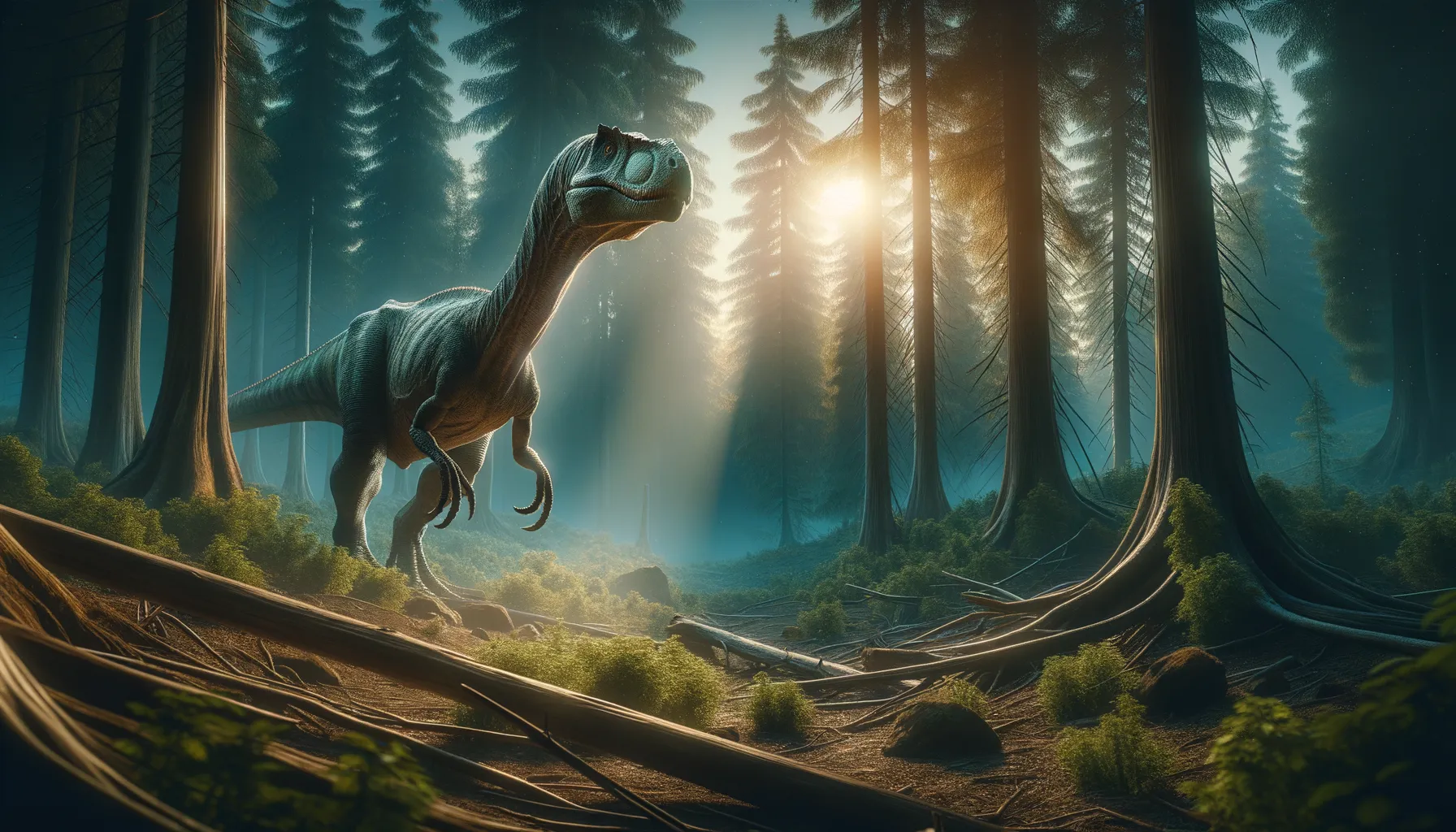
Calamospondylus
A nimble survivor of the ancient world.
Period
Cretaceous
Length
Roughly 3 to 4 meters (10 to 13 feet) long.
Height
Around 1 to 1.2 meters (3.3 to 3.9 feet) tall.
Weight
Approximately 60 to 100 kg (132 to 220 lbs).
Calamospondylus was a medium-sized theropod dinosaur that roamed the Earth during the Early Cretaceous period. Known for its lightweight skeleton, it was adapted to life on land and may have been agile enough to navigate through dense forests. Though not a top predator, its diet likely included small animals. Fossils mainly found in Europe suggest that it was well-distributed across various terrains.
Diet
Calamospondylus was likely carnivorous, feeding on small mammals, reptiles, and possibly insects. It would scavenge when easier prey was unavailable and may have occasionally consumed vegetation.
Hunting
It used speed and agility to hunt smaller prey, relying on quick, sudden attacks. Its hunting techniques were likely opportunistic, taking advantage of any available food source.
Environmental challenges
Living in a diverse ecosystem, it faced competition from larger predators. Environmental changes such as shifts in climate or vegetation would have been significant challenges. It had to adapt to periods of food scarcity due to changes in its environment.
Speed
Moderate, capable of running but not very fast.
Lifespan
Estimated around 20 to 30 years.
First discovery
Discovered by Richard Owen in 1858.
Fun Facts
- Calamospondylus was a small theropod dinosaur that lived during the Early Cretaceous period, about 125 million years ago.
- Its name means 'reed vertebra', referencing the structure of its backbones which resembled reeds.
- The first discovered fossil of Calamospondylus was found on the Isle of Wight in England, which is known as a hotspot for dinosaur discoveries.
- Calamospondylus is only known from very fragmentary remains, primarily some vertebrae, making it a bit of a mystery for paleontologists.
- Despite its limited fossils, Calamospondylus is believed to have been a bipedal dinosaur, likely fast and agile in its movements.
- It was originally described in the 19th century, during a time when the understanding and classification of dinosaurs were still developing.
- Due to the lack of complete fossil evidence, the exact size and appearance of Calamospondylus remain largely speculative.
Growth and Development
As a juvenile, it depended heavily on its speed and agility to avoid predators. Growth rates may have varied based on food availability and environmental conditions. Over time, it developed more pronounced physical features that marked its maturity.
Habitat
Calamospondylus inhabited forested areas and open plains. Its environment provided ample cover for hunting and escaping larger predators. Water sources in its habitat were important for sustaining its prey, making them indirectly crucial for its survival.
Interaction with other species
It likely coexisted with various herbivorous dinosaurs and smaller predators. Competition with other carnivores would have shaped its hunting and social behaviors. Its interactions were mainly driven by survival, focusing on hunting and territory establishment.
Natural lifespan
Its natural lifespan was probably between 20 to 30 years.
Reproduction
It likely laid eggs, with nesting behavior typical among theropods. Parental care might have been minimal, with young dinosaurs relying on innate survival instincts. Mating rituals and territory competition would have played a role in reproduction.
Social behaviour
Primarily solitary, though may have formed loose groups for hunting or protection. Social interactions were minimal, focused on reproduction or territory disputes. Communicated through vocalizations or body language to coordinate actions.
Fossil locations
Fossil remains of Calamospondylus have mostly been found in Europe, particularly in England. These discoveries have provided insight into its skeletal structure and living habits. The scattered find locations suggest a wide range of habitats during its time.
